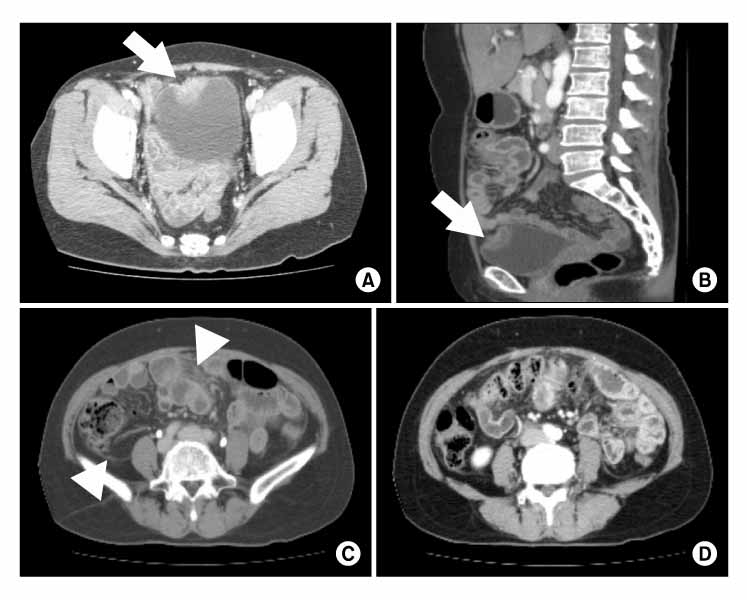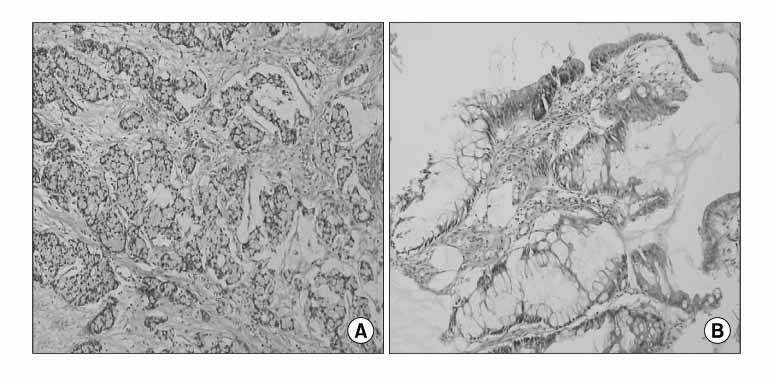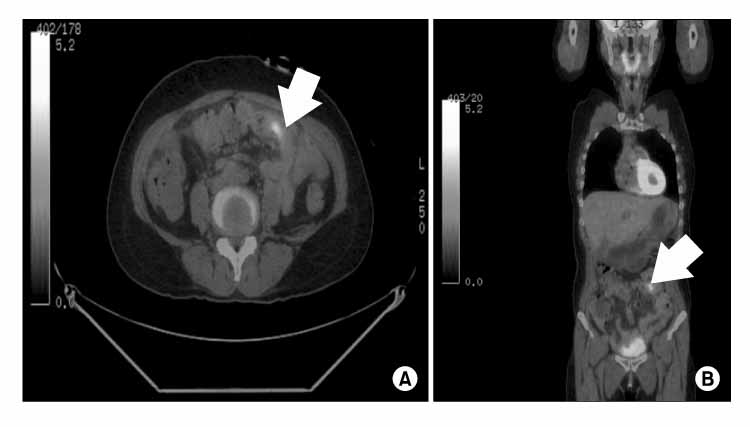Korean J Urol.
2009 Feb;50(2):188-191.
Primary Signet Ring Cell Carcinoma of the Urinary Bladder
- Affiliations
-
- 1Department of Urology , Pusan Paik Hospital, Inje University College of Medicine, Busan, Korea. urokang@lycos.co.kr
- 2Department of Pathology, Pusan Paik Hospital, Inje University College of Medicine, Busan, Korea.
- 3Paik Institute for Clinical Research, Busan, Korea.
Abstract
- Primary signet ring cell carcinoma of the urinary bladder is a relatively rare histological variant of mucus-producing adenocarcinoma usually of poor prognosis. We report two cases of primary bladder signet ring carcinoma. The first patient underwent a radical cystectomy with ileal conduit (pT3bN1M0), radiotherapy, and chemotherapy (M-VAC regimen) and subsequently expired 37 months after surgery. The other was initially diagnosed with peritoneal metastasis from the primary bladder signet ring cell carcinoma and was treated with partial cystectomy (pT3bNOM1). Postoperative adjuvant therapy was not done because of patient's refusal.
MeSH Terms
Figure
Reference
-
1. Saphir O. Signet-ring cell carcinoma of the urinary bladder. Am J Pathol. 1955. 31:223–231.2. Thomas DG, Ward AM, Williams JL. A study of 52 cases of adenocarcinoma of the bladder. Br J Urol. 1971. 43:4–15.3. Erdogru T, Kilicaslan I, Esen T, Ander H, Ziylan O, Uysal V. Primary signet ring cell carcinoma of the urinary bladder. Review of the literature and report of two cases. Urol Int. 1995. 55:34–37.4. Cheon J, Shin MK, Cho JH, Kim SK, Won NH. Two cases of primary signet-ring-cell adenocarcinoma of the urinary bladder. Korean J Urol. 1986. 27:489–494.5. Woo JH, Park HJ, Kim EK, Kang JY, Jeong JY, Yoo TK. Primary bladder signet ring cell carcinoma extended to prostate. Korean J Urol. 2007. 48:356–358.6. Johnson DE, Hodge GB, Abdul-Karim FW, Ayala AG. Urachal carcinoma. Urology. 1985. 26:218–221.7. Kunze E. Histogenesis of nonurothelial carcinomas in the human and rat urinary bladder. Exp Toxicol Pathol. 1998. 50:341–355.8. Murai T, Miura T, Kondo I, Fujii H. Superficial and pedunculated signet ring cell carcinoma of the urinary bladder: a case report. Hinyokika Kiyo. 1992. 38:1395–1398.9. Yamamoto S, Ito T, Akiyama A, Miki M, Tachibana M, Takase M, et al. Primary signet-ring cell carcinoma of the urinary bladder including renal failure. Int J Urol. 2001. 8:190–193.10. Hirano Y, Suzuki K, Fujita K, Furuse H, Fukuta K, Kitagawa M, et al. Primary signet ring cell carcinoma of the urinary bladder successfully treated with intra-arterial chemotherapy alone. Urology. 2002. 59:601.
- Full Text Links
- Actions
-
Cited
- CITED
-
- Close
- Share
- Similar articles
-
- Primary Bladder Signet Ring Cell Carcinoma Extended to Prostate
- Primary Signet-Ring Carcinoma in the Bladder Presenting as a Hypervascular Luminal Polypoid Mass
- Primary Signet Ring Cell Adenocarcinoma of the Bladder: Report of Two Cases
- Primary Signet Ring Cell Carcinoma with Widespreand Metastasis
- Two Cases of Primary Signet-Ring-Cell Adenocarcinoma of the Urinary Bladder




